Yeast infections on the skin are a widespread but often underestimated issue, affecting people of all ages and backgrounds. These infections, usually caused by the overgrowth of the fungus Candida albicans, can emerge suddenly or develop gradually in various moist, warm areas of the body. The resulting symptoms—ranging from relentless itching, redness, and swelling to scaling, soreness, and even cracking—can disrupt daily life, lower self-confidence, and create persistent discomfort.
Navigating treatment options can feel overwhelming, especially as more individuals try to avoid side effects from conventional antifungal medications. Increasing awareness about holistic wellness and a desire for gentle skin solutions fuel an urgent search for practical, natural alternatives. Natural remedies for yeast infection on skin offer a way to address not only the immediate symptoms but also the underlying causes—helping restore the body’s delicate microbial balance, reduce inflammation, and support long-term skin health.
In this detailed guide, you’ll find a clear, actionable resource for anyone seeking alternatives rooted in both traditional wisdom and modern science. We examine how skin yeast infections begin, why prevention matters as much as treatment, and which home remedies truly work—all while emphasizing the importance of understanding your skin’s unique needs. Whether you’re seeking to heal a current outbreak or protect against future ones, this comprehensive article equips you with the most trusted strategies, hands-on advice, and practical examples to restore comfort and confidence.
What Is a Yeast Infection on the Skin?
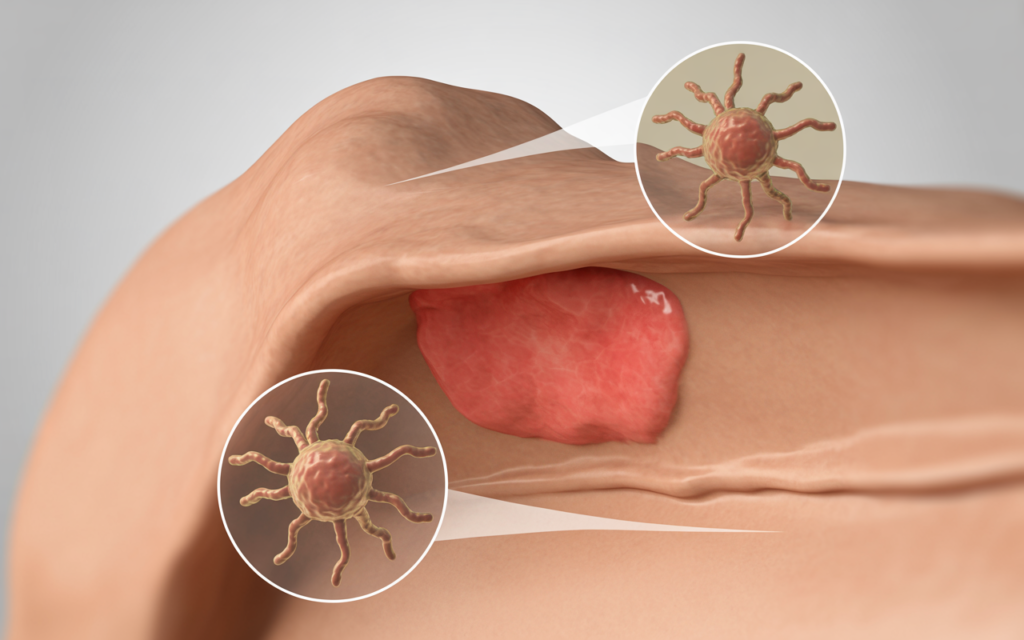
A yeast infection occurs when there is an overgrowth of the fungus Candida, which normally lives harmlessly on your skin. When the balance of microorganisms is disturbed due to moisture, heat, or immune suppression, Candida can multiply and cause an infection.
Common Signs of Skin Yeast Infections
- Persistent itching or burning
- A red or inflamed rash, often shiny
- Scaling or flaking of the skin
- White or yellowish patches
- Swelling or cracked skin in folds and creases
- Foul odor in the affected area
These symptoms usually show up in warm, moist areas like the armpits, under the breasts, the groin, feet, belly folds, and between the fingers or toes.
What Causes Skin Yeast Infections?
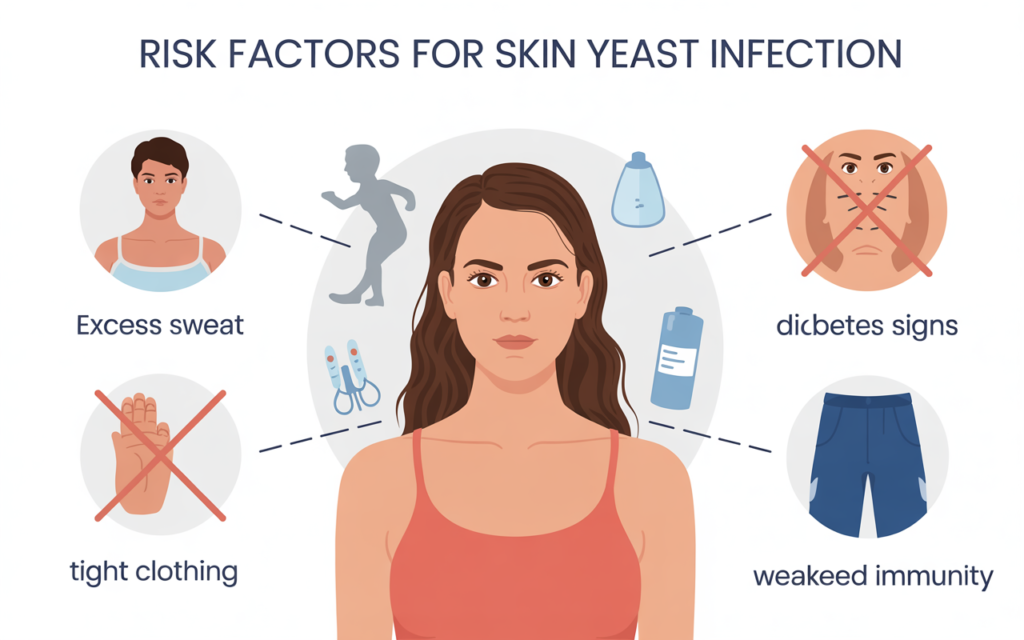
Several internal and external factors can trigger a skin yeast infection:
1. Excessive Moisture
- Wearing tight, non-breathable clothing
- Not drying off properly after showers or workouts
- Sweaty environments and poor ventilation (e.g. tropical climates)
2. Weakened Immune System
- Illness, stress, or lack of sleep can compromise immunity
- Chemotherapy or autoimmune disorders can encourage fungal overgrowth
3. Compromised Skin Hygiene
- Wearing damp clothing for long periods
- Rarely changing underwear or cleaning sweaty areas
- Sharing towels or personal items
4. Medications
- Antibiotics kill beneficial bacteria that keep yeast in check
- Steroids suppress the immune system, allowing Candida to grow
5. Underlying Health Conditions
- Diabetes (especially poorly controlled)
- Obesity (due to skin folds and higher body temperature)
- Hormonal imbalances (pregnancy, menopause, or use of oral contraceptives)
Why Use Natural Remedies for Yeast Infection on Skin?
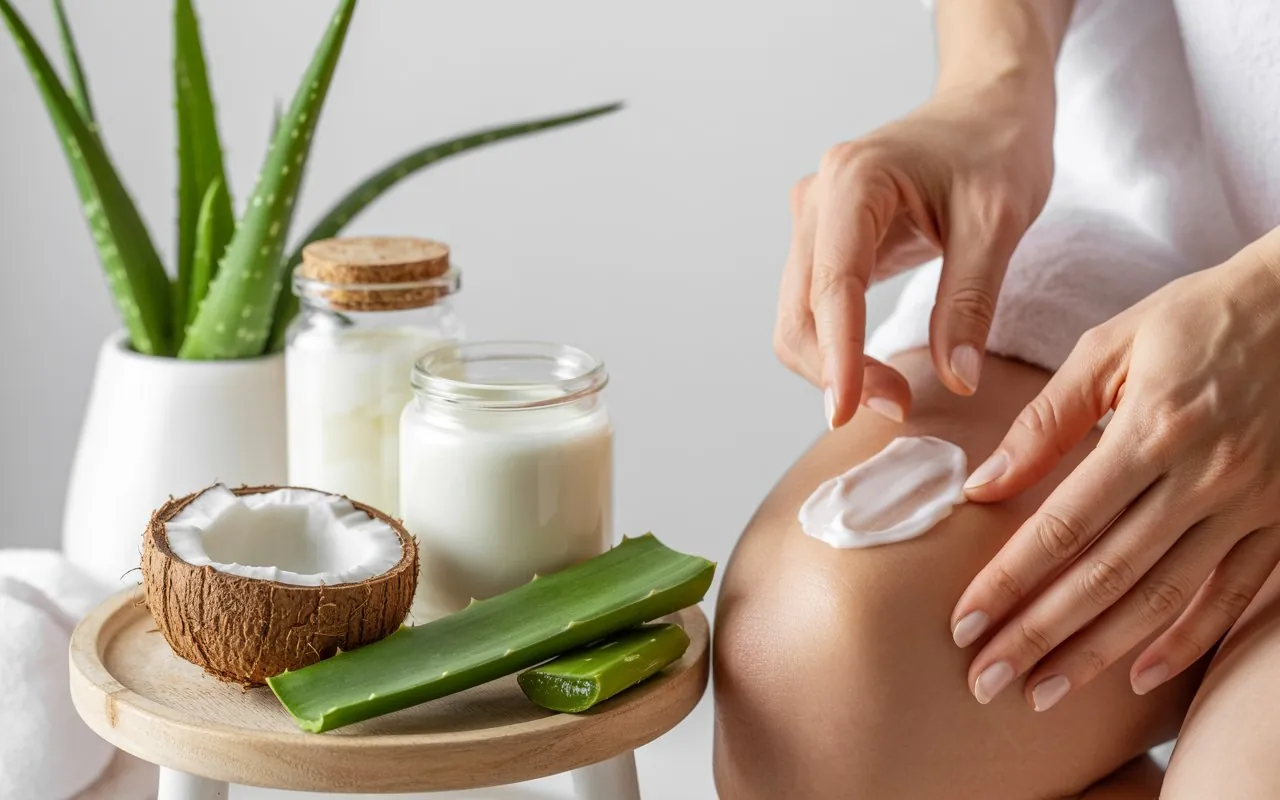
Natural treatments offer several benefits:
- Fewer Side Effects: They are gentler on the skin.
- Cost-Effective: Many ingredients can be found at home.
- Safe for Daily Use: Most remedies can be used repeatedly without long-term harm.
- Support Holistic Healing: They work with the body’s systems, not against it.
Additionally, natural remedies can aid not just in symptom relief but in restoring the skin’s protective barrier, reducing inflammation, and supporting a healthy microbiome to prevent recurrence.
Top Natural Remedies for Yeast Infection on Skin
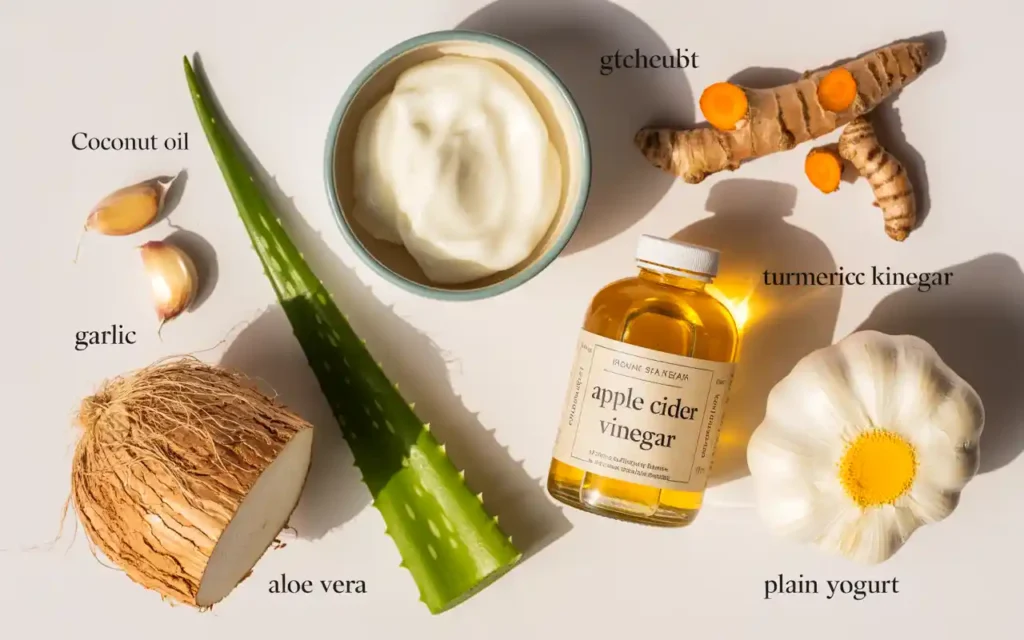
Let’s explore the most effective, science-backed remedies that people have used safely and successfully.
1. Coconut Oil
Coconut oil is a versatile antifungal and skin-soothing agent due to its high levels of caprylic acid and lauric acid.
How to use:
- Apply a thin layer of organic, cold-pressed coconut oil to the clean, affected area 2–4 times a day.
- It coats the skin, creating a breathable barrier and promotes healing.
- Can be safely used on infants, adults, and sensitive skin.
Pro Tip: Add a few drops of lavender or tea tree essential oil for extra antifungal power.
—
2. Tea Tree Oil (Diluted)
Tea tree oil contains terpinen-4-ol, a powerful antifungal agent shown to inhibit Candida growth when used correctly.
How to use:
- Always dilute tea tree oil in a carrier oil (e.g., coconut or olive oil) — about 3–5 drops per tablespoon.
- Dab gently on the rash 1–2 times a day.
Important: Never apply undiluted tea tree oil directly onto the skin — it can cause burns and irritation.
3. Apple Cider Vinegar (ACV)
Raw, organic ACV restores your skin’s natural pH and discourages fungal growth.
How to use:
- Mix 1 part ACV with 3 parts water.
- Apply as a compress or spritz onto the affected skin and leave on for 15–20 minutes.
- Rinse and dry thoroughly.
Bonus: You can also add 1 cup of ACV to a lukewarm bath and soak for 15–30 minutes.
4. Aloe Vera Gel
Aloe Vera is an anti-inflammatory with mild antifungal properties, making it ideal for itchy or irritated skin.
How to use:
- Apply 100% pure aloe vera gel to the clean, dry infected area 2–3 times daily.
- If using fresh aloe, slice a leaf lengthwise and scoop out the gel.
- Store in the fridge for a cooling effect.
Tip: Aloe is particularly sultry for calming post-itching inflammation and reducing redness.
5. Yogurt and Probiotics
Plain yogurt contains active Lactobacillus bacteria that help restore microbial balance on the skin.
Topical use:
- Apply plain, unsweetened yogurt to the affected area like a mask.
- Leave it on for 30 minutes, then gently rinse and pat dry.
Oral support:
- Eat yogurt and fermented foods daily (kefir, kombucha, sauerkraut)
- Take probiotic supplements with at least 5 billion CFUs of Lactobacillus
Avoid sweetened yogurts — sugar promotes yeast growth.
6. Turmeric
Turmeric is rich in curcumin, a compound known for its anti-inflammatory and antifungal effects.
How to use (topical):
- Mix turmeric powder with water or coconut oil into a paste.
- Apply gently on the rash and let sit for 20–30 minutes.
- Rinse off and dry the skin completely.
Oral benefits:
- Add turmeric to smoothies, soups, or herbal teas daily.
- Combine with black pepper to boost absorption.
Note: Turmeric can stain skin and clothing, so use with care.
7. Garlic (Raw or Infused Oil)
Garlic contains allicin, one of nature’s most powerful natural antimicrobials.
Topical use:
- Crush a clove of garlic and mix it with one tablespoon of coconut oil.
- Apply only to a small area of the skin and rinse off after 15 minutes.
Internal support:
- Add raw garlic to meals to strengthen immune responses and detoxify your system.
Caution: Avoid placing raw garlic near mucous membranes or broken skin, as it can burn.
8. Oregano Oil (Diluted)
Oregano oil contains carvacrol, which has powerful antifungal properties.
How to use:
- Mix 1 drop of oregano oil with 1 tablespoon of a carrier oil.
- Apply gently once per day.
Important: Oregano oil is very concentrated. Avoid use on genital areas or sensitive skin unless recommended by a healthcare provider.
Best Practices for Using Natural Remedies
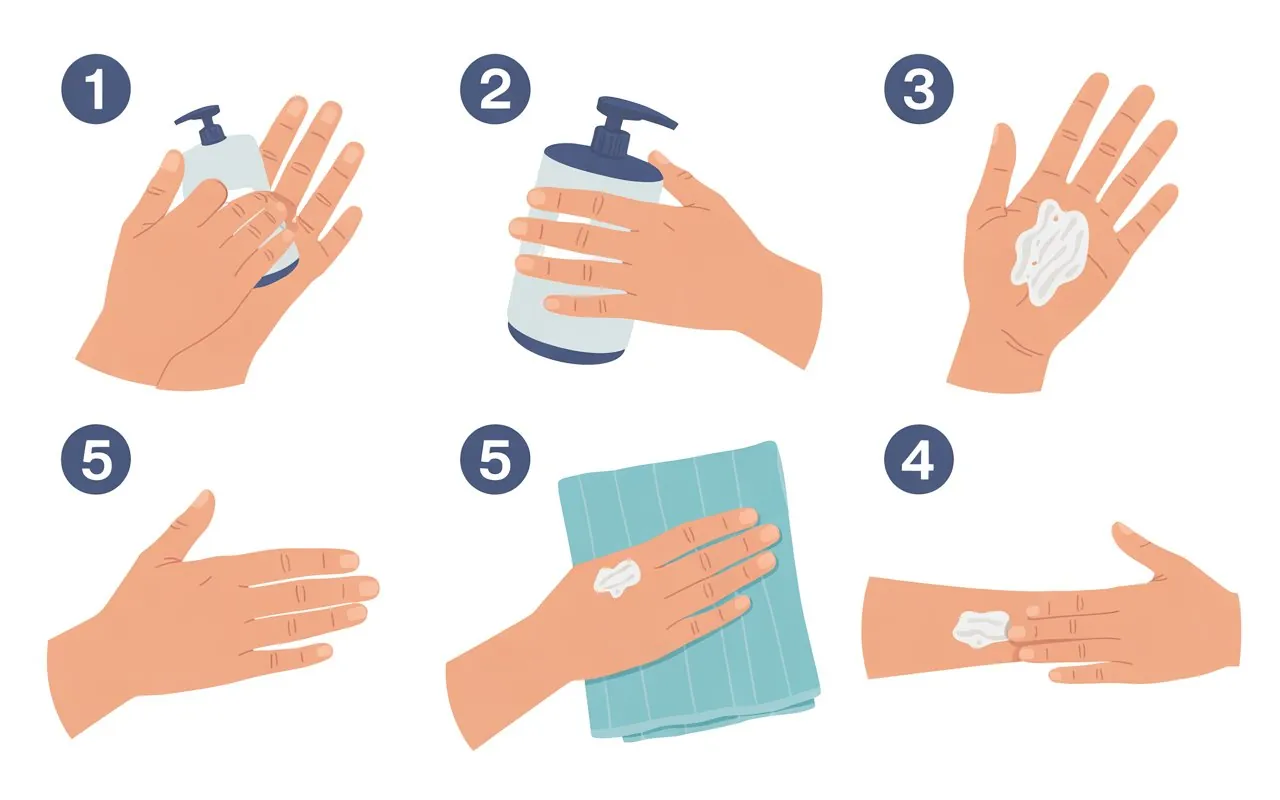
To get the best out of your chosen natural remedy:
- Clean and dry the area thoroughly. Moisture promotes yeast growth, so use a soft towel or cool air dryer.
- Apply your remedy consistently. Treat 2–3 times daily until symptoms are completely gone.
- Continue treatment 2–3 days after symptoms disappear. This helps ensure all remaining yeast is eliminated.
- Avoid harsh soaps, scented products, or tight clothing.
- Always test on a small patch of skin first — even natural remedies can cause irritation or allergic reactions.
Prevention: Lifestyle Tips to Avoid Skin Yeast Infections
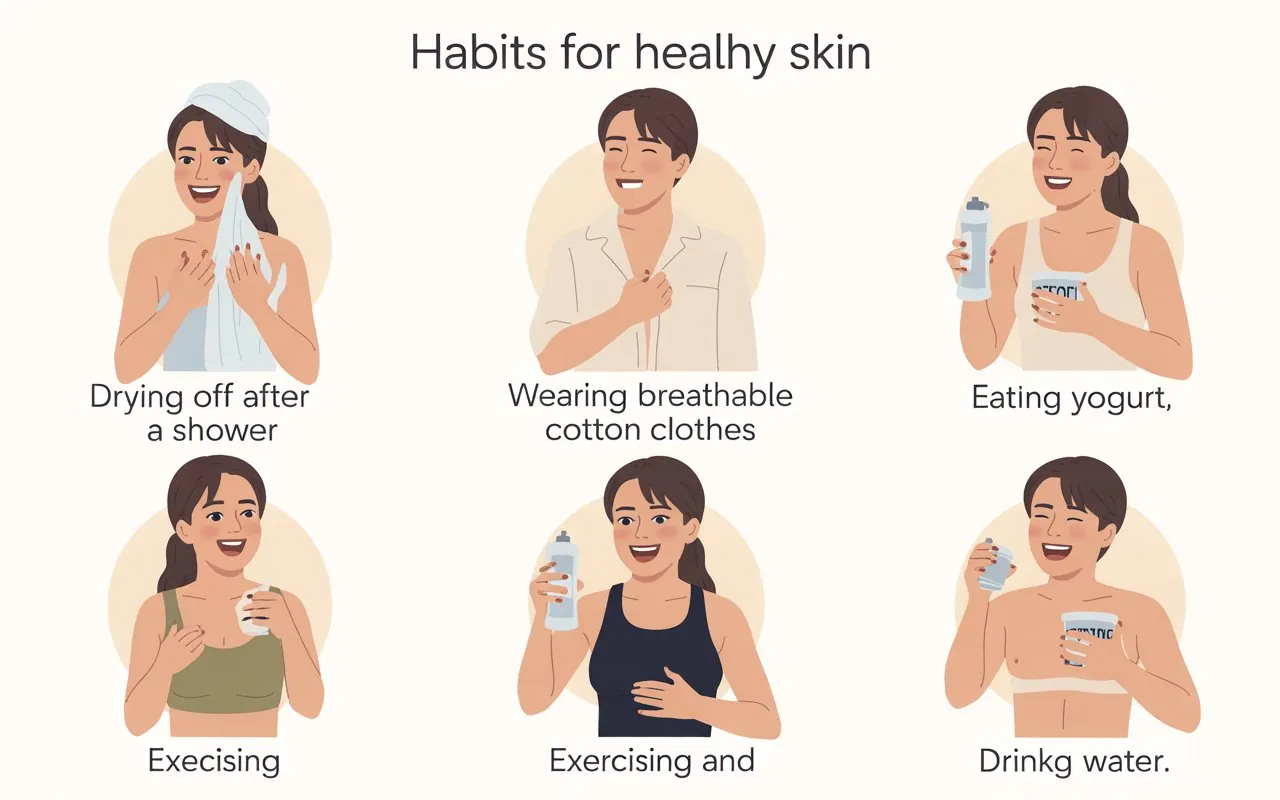
Preventing yeast infections is just as important as treating them. Make the following habits a part of your daily routine:
1. Keep Skin Dry
- After bathing or sweating, dry off completely, especially in creases.
- Use a soft towel or body powder (preferably talc-free and antifungal).
2. Wear Breathable Clothing
- Choose cotton and moisture-wicking fabrics.
- Change sweaty clothes and underwear promptly.
- Avoid synthetic tights, tight jeans, and fitted bras made with non-breathable materials.
3. Watch Your Diet
- Excess sugar fuels yeast: limit sugary drinks, pastries, and refined carbs.
- Eat more greens, whole grains, lean protein, and probiotic-rich foods.
4. Strengthen Your Immune System
- Manage chronic conditions like diabetes.
- Get 7–9 hours of sleep per night.
- Stay active and hydrate well.
5. Limit Antibiotics
- Use only when necessary, as they destroy good bacteria that keep yeast in check.
- Pair antibiotic use with daily probiotics.
When to See a Doctor
Natural remedies are effective for minor to moderate skin yeast infections. However, you should consult a doctor if:
- The infection spreads or worsens after several days.
- Symptoms include pus, swelling, or fever.
- You have recurrent infections (more than 3–4 per year).
- You have diabetes, HIV, or other immune disorders.
- The infection appears near the eyes, genitals, mouth, or on an infant.
Proper diagnosis is crucial if over-the-counter and natural options don’t improve the condition.
Natural Remedies for Yeast Infection on Skin: Comparison Table
| Remedy | Usage | Effect | Strength | Notes |
|---|---|---|---|---|
| Coconut Oil | Topical | Antifungal, soothing | Mild | Safe for all ages |
| Tea Tree Oil | Topical (diluted) | Potent antifungal | Strong | Always dilute and patch test |
| Apple Cider Vinegar | Topical, bath or spray | Skin-pH balance, odor relief | Moderate | Avoid cracked skin |
| Aloe Vera | Topical Gel | Cooling, healing, antifungal | Mild | Best when fresh |
| Yogurt | Topical and ingest | Probiotics fight yeast | Moderate | Avoid sugary yogurt |
| Turmeric | Topical paste, ingest | Reduces inflammation | Moderate | May stain skin |
| Garlic | Oral or diluted topical | Kills yeast effectively | Strong | Strong odor, can irritate skin |
| Oregano Oil | Topical (diluted) | Powerful antifungal agent | Very Strong | Use with caution |
Frequently Asked Questions

Can I use natural remedies for infection in sensitive areas?
Yes, but choose gentle ones like coconut oil, aloe vera, or yogurt, and avoid essential oils unless fully diluted and recommended by a healthcare provider.
How long does it take for a natural remedy to work?
Most people feel relief within 24–72 hours. Complete healing may take up to 7–10 days, depending on the severity and consistency of treatment.
Can I combine several natural treatments?
Yes, but do so cautiously. Stick with 1–2 remedies at a time to avoid skin overload or confusion about what’s working.
Are these remedies safe for children or the elderly?
Most are, especially coconut oil, yogurt, and Aloe Vera. Always consult a pediatrician or doctor before applying anything to a baby or someone with fragile skin.
conclusion
Yeast infections don’t have to be stressful or expensive to treat. With the help of natural remedies for yeast infection on skin, you can restore balance to your skin and prevent future flare-ups—all while using safe, accessible, and time-tested solutions. The key is consistency, hygiene, and a healthy lifestyle. Use this guide as your reference for both treatment and prevention, and always listen to your body’s signs along the way. Disclaimer: This article is for informational purposes only and is not a substitute for medical advice. Always consult your doctor before beginning any new treatment, especially if symptoms worsen or persist.